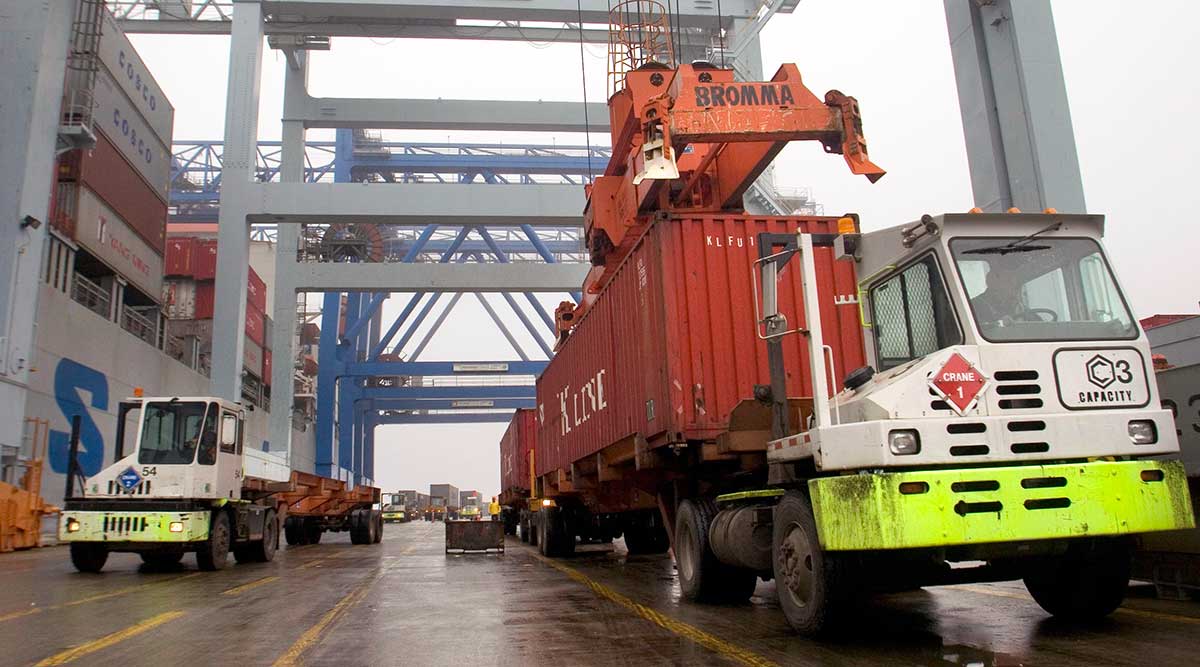Boston Port to Test Limits of Terminal with Larger Containership

Massport and one of the largest shipping companies in the world plan to test the limits of Boston’s Conley Terminal in the coming weeks, bringing in the largest containership in the port’s history.
“It’s a challenge, like anything else,” said Thomas Glynn, chief executive of Massport. “They wouldn’t be giving us the challenge if they didn’t think there was a possibility of us meeting it.”
Chinese shipping company Cosco will soon be sending a ship carrying 8,500 containers to the Conley Terminal, surpassing an 8,000-container ship as the largest to come to Boston. Typically, the ships that dock at the Conley Terminal are far smaller.
Glynn said the large ship will have to “ride the tide” to get in, an increasingly common practice. The biggest challenge, Glynn said, will be off-loading containers because the Conley Terminal’s cranes will not be able to reach every container on the ship
“It’s how high they are stacked and how far the crane can reach,” Glynn said. Not all 8,500 containers will be off-loaded in Boston, so it will come down to planning where each container should go, he said.
Cosco did not respond to multiple requests for comment.
A ship carrying 18,000 containers regularly stops at some West Coast ports, and the number of larger ships is expected to increase thanks to the imminent opening of the expansion of the Panama Canal.
“This is a period of great transition for ocean commerce, specifically the types of vessels that are being called,” said Peter Friedmann, legal counsel and co-founder of the Coalition of New England Companies for Trade. “What we’d like to see is the largest ship that can be efficiently handled at the Port of Boston.”
While ships are getting bigger and bigger, ports have fallen behind with harbor dredging and modification projects financed by federal dollars.
“The dredging isn’t moving as fast as the market,” Glynn said.
Massport has secured federal and state funding for a dredging project that is expected to cost more than $300 million to allow larger ships to enter the Conley Terminal, but like many other ports with similar projects, the federal money has not been distributed.
Until that happens, carriers are trying to see how far they can push and how big a ship they can dock at the terminal, Glynn said.
“We view this as pressure in the marketplace to see what they can get on the East Coast ports while we’re waiting for dredging,” he said.
Last October, Massport said it set records for the number of containers and import and export volume through Conley during the previous fiscal year.

